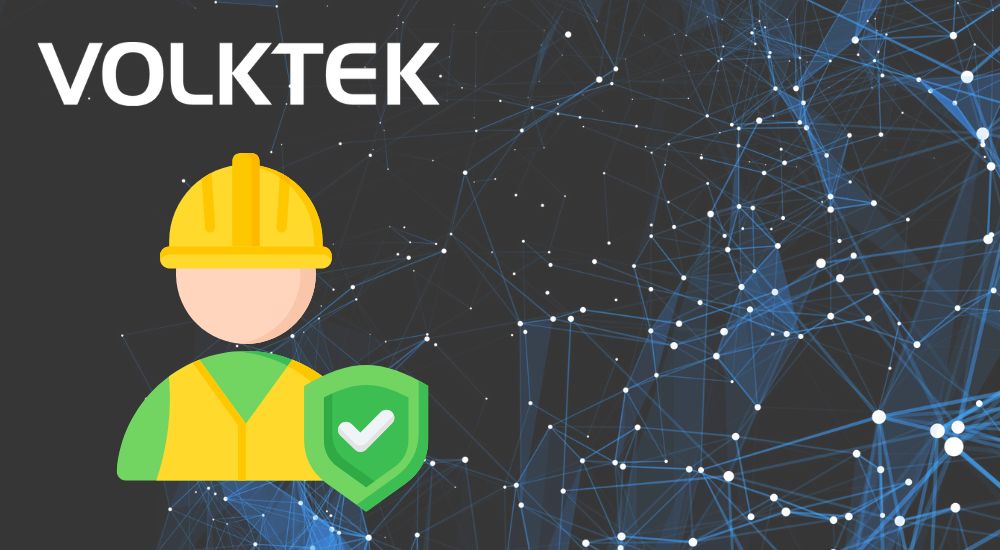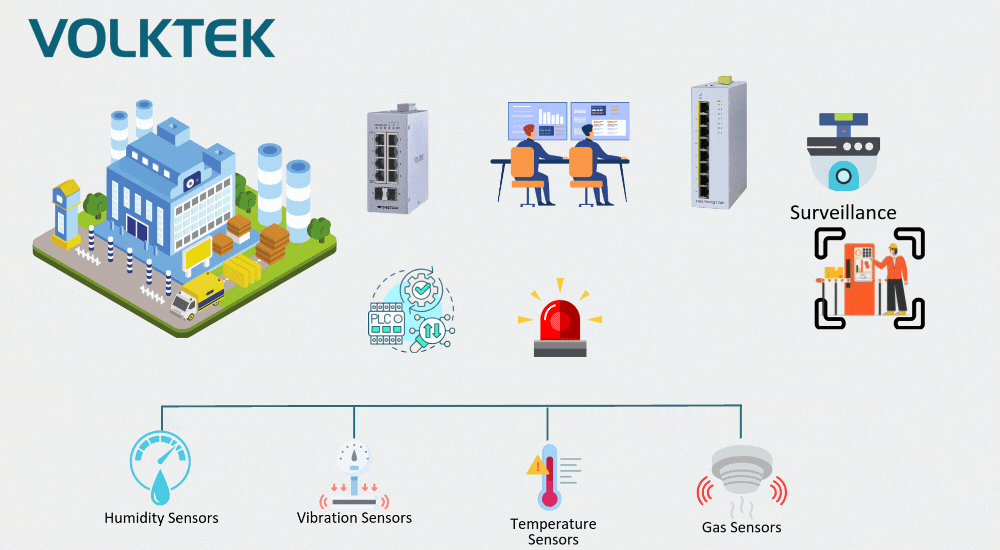How Industrial 4.0 and Smart Networks Enhance Safety & Security
2025-02-19
Product News
Share on

As awareness of a safe working environment continues to rise, businesses are actively optimizing work environments to reduce risks and ensure personnel safety. Industrial 4.0 integrates smart and automated technologies to revolutionize safety management, making accident prevention more precise and real-time. Industrial 4.0 enhances productivity and significantly reduces workplace risks, creating a safer work environment.
Key applications include:
- Real-Time Monitoring and Early Warning:
- Sensors, IoT, and AI technologies enable real-time monitoring of equipment operation and environmental conditions, such as gas leaks, temperature anomalies, or mechanical failures. These technologies provide early warnings and automatic shutdowns to prevent accidents.
- Robotics and Automation Replacing High-Risk Operations:
- Robots and automated systems perform hazardous or repetitive tasks, such as heavy lifting and high-temperature operations, reducing workers' exposure to dangerous environments.
- AR/VR Training and Simulation:
- Augmented Reality (AR) and Virtual Reality (VR) facilitate safety training, allowing employees to simulate emergency scenarios, enhance responsiveness, and reduce operational risks.
- Big Data and AI Predictive Maintenance:
- AI-driven data analysis predicts potential failures and enables preventive maintenance, minimizing the risk of safety incidents caused by unexpected equipment failures.
- Smart Factory Management Systems:
- Integrating SCADA, MES, and other intelligent monitoring systems ensures compliance with safety standards, automates incident recording and analysis, and optimizes safety management processes.
Volktek’s Role in Industrial 4.0 Safety Applications
Volktek’s industrial-grade Ethernet switches play a crucial role in enhancing safety management by:
- Real-Time Monitoring and Data Transmission:
- Volktek’s switches ensure high-stability, low-latency network connections, allowing sensors, cameras, and robots to transmit real-time data for continuous monitoring and risk detection.
- Redundant mechanisms such as ERPS and RSTP ensure rapid network recovery in case of failures, preventing disruptions in safety monitoring.
- Supporting Industrial Protocols for Stable Operations:
- Support for Modbus TCP, Profinet, and EtherNet/IP enables seamless communication between automation equipment, SCADA systems, and PLC controllers, ensuring stable operation and minimizing unexpected downtime.
- These protocols also integrate safety devices, such as gas detectors and machine safety guards, with control centers to respond to anomalies in real-time.
- High Durability for Harsh Environments:
- Volktek's industrial ethernet switches operate reliably in extreme conditions, with features like wide temperature tolerance (-40°C to 75°C) and dust and vibration resistance (IP30 or above).
- It is suitable for harsh environments such as steel mills, chemical plants, and mining sites, ensuring the continuous operation of safety monitoring systems.
- Network Security Mechanisms to Prevent Cyber Threats:
- As Industrial 4.0 increasingly relies on network connectivity, Volktek’s switches incorporate security features such as 802.1X, ACL, and Port Security to prevent unauthorized access and cyberattacks that could disrupt production systems and safety measures.
- VLAN isolation and QoS management prioritize critical safety system traffic, ensuring network stability.
- Edge Computing and AI Data Analysis Integration:
- Within innovative factory frameworks, Volktek’s switches efficiently transmit large volumes of sensor data—such as temperature anomalies, vibration changes, and equipment conditions—to AI analytics systems for real-time risk prediction and accident prevention.
Volktek’s industrial Ethernet switches provide stable real-time monitoring networks, support for industrial protocols, enhanced durability, and robust cybersecurity protections to ensure the efficient operation of production and safety monitoring systems. By doing so, they help reduce the occurrence of workplace safety incidents and contribute to a more innovative, safer industrial environment.


